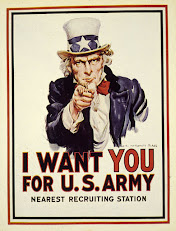Propaganda is a term that many people are aware of and that many people draw negative conclusions about. These people are not incorrect for having negative thoughts about this term and probably have reason for thinking so.
Propaganda is defined as the spreading of ideas, information, or rumors for the purpose of helping or injuring an institution, a cause, or a person, according to the
Merriam-Webster Dictionary. Although many may disagree, propaganda is often true information, however it intentionally leaves out other important information in order to hurt an opposing side.
Propaganda inflicts bias into communities and forces opinions onto society in order to get them to agree with the intended agenda. There are different techniques and tools used within propaganda that successfully appeal to society and force them to be drawn towards the idea. They are as follows: Fear, Bandwagon, Promises, Inspiration, Anger/Hate, Commonality, etc.
The aforementioned list of techniques used in propaganda help to appeal to individuals rather than general groups. Specifically, fear is common with propaganda, due to the fact that if you fear something, you will most likely do what it says. Additionally, the technique of bandwagon is an easy way to catch someone's eye. For example, Uncle Sam is an iconic American symbol. The use of his character, his pose, or even his catch phrase is a bandwagon technique because it latches onto the popularity of Uncle Sam.
Although Propaganda has been around for centuries, it did not really become popular until World War I. The parties involved in the war used strong propaganda techniques to not only promote their side of the war, but also to diminish the opposing side, essentially creating a right and wrong.
WWI kickstarted the common use of propaganda in war. This lead to war propaganda being separated form regular propaganda, almost having different intentions and ideas. In the linked article above, the author writes, "Today's war is four-dimensional. It is a combination of military, economic, political, and propaganda pressure against the enemy".
The fact that propaganda is now included as such an influential part of war, and it on the same level as economics and militarily forces is somewhat concerning. War propaganda does not stop and has become extremely prominent over the years. In today's age though, it just goes by a different name: Fake News.
Fake news is perhaps one of the most controversial terms today, not only in politics, but in the media in general. The term automatically inflicts negative thoughts and creates a politically motivated agenda, whether it be from the right or the left. What people don't realize though, is that fake news is nearly the same concept as propaganda, just more modernized with a different name.
Whether its reading a headline from CNN or a tweet from Donald Trump, anything said from an opposing viewpoint of one's beliefs may be considered fake news. Republicans believe that any news article that has any democratic ideas are automatically fake news, and democrats believe anything that a republican writes could be fake news.
The propaganda that is fake news has created the most politically separated nation in history. This is because each side is using proper propaganda techniques to inflict their agendas and opinions onto society. Whether they appeal to emotion or appeal to logic, propaganda is used in today's world much more than anyone thinks it is.
Propaganda has a very strong effect on society as it forces opinions and ideas onto everyone, without giving them proper time and reason to form their own beliefs, Society feels targeted through the use of individualized terms, including "you", "we", "us", etc. People fear negativity and propaganda thrives off of that. Even though there are instances of positive propaganda, there has been such negative uses that people seemingly skip right over any propaganda that may be positive.






























